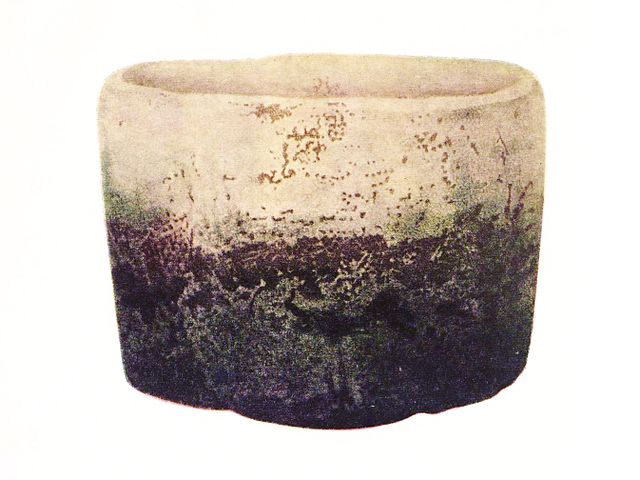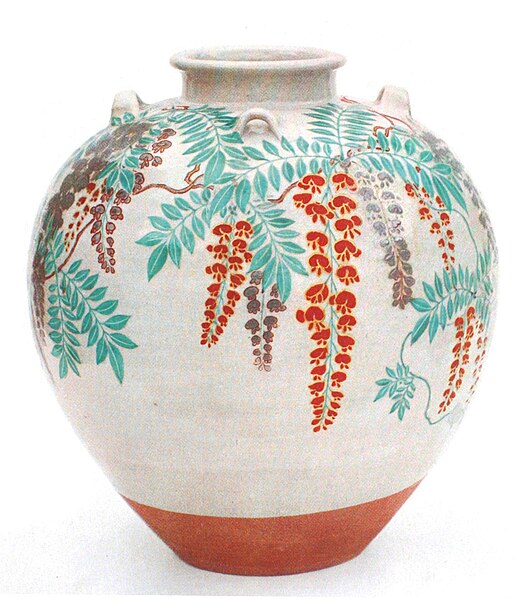Satsuma ware is a type of Japanese pottery originally from Satsuma Province, southern Kyūshū. Today, it can be divided into two distinct categories: the original plain dark clay early Satsuma made in Satsuma from around 1600, and the elaborately decorated export Satsuma ivory-bodied pieces which began to be produced in the nineteenth century in various Japanese cities. By adapting their gilded polychromatic enamel overglaze designs to appeal to the tastes of western consumers, manufacturers of the latter made Satsuma ware one of the most recognized and profitable export products of Japan for centuries, and even became one of the key sources of funding for the Meiji period reforms.
Satsuma earthenware tea storage jar (chatsubo) with paulownia and thunder pattern, late Edo period, circa 1800-1850
Satsuma bowl detail c. 1870
Bowl with a multitude of women, Meiji era, c. 1904, Kinkōzan workshop, by Yabu Meizan
White glaze Satsuma tea bowl in shape of lotus leaf, Edo period, 17th century
Japanese pottery and porcelain
Pottery and porcelain is one of the oldest Japanese crafts and art forms, dating back to the Neolithic period. Kilns have produced earthenware, pottery, stoneware, glazed pottery, glazed stoneware, porcelain, and blue-and-white ware. Japan has an exceptionally long and successful history of ceramic production. Earthenwares were made as early as the Jōmon period, giving Japan one of the oldest ceramic traditions in the world. Japan is further distinguished by the unusual esteem that ceramics hold within its artistic tradition, owing to the enduring popularity of the tea ceremony.
"Fujisan" white Raku ware tea bowl (chawan) by Hon'ami Kōetsu, Edo period (National Treasure)
Tea-leaf jar with a design of wisteria by Nonomura Ninsei, Edo period (National Treasure)
Jōmon pottery flame-style (火焔土器, kaen doki) vessel, 3000–2000 BC, attributed provenance Umataka, Nagaoka, Niigata
Haniwa warrior in keiko armor, Kofun period, 6th century (National Treasure)








